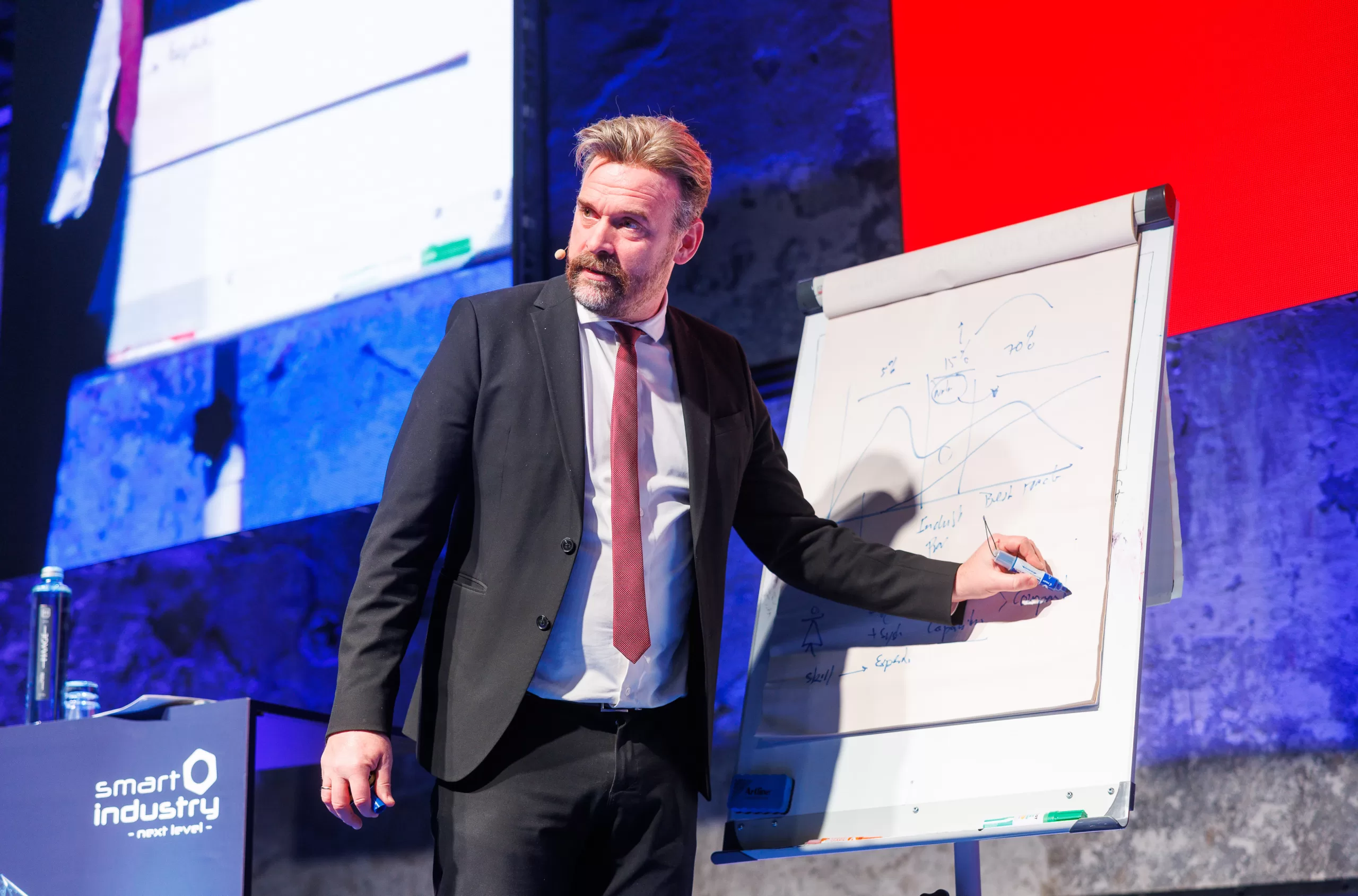Prof. von Scheel has dedicated 20 years to the study and research of strategy in the scientific disciplines of Patternicity, Statistical Analysis, and Probabilistic Analysis in collaboration with
The science of finding meaningful patterns
“Today is characterized by a shift towards digital information (bits) over physical matter (atoms), detecting meaningful and reusable patterns is essential in how we as humans create value.”
Patternicity is the science discipline of finding meaning and reusable in patterns, detecting patterns that may not exist or identifying meaningful correlations through the classification and categorization of archetypes, their ontology, and semantic relationships.
This, combined with statistical analysis as to the ability to capture value: A business creates X dollars of value and captures Y% of X, where both X and Y serve as independent variables and the probabilistic impact analysis (for example the utility delta, multiplied by the number of people it will affect, compared to the current state-of-the-art), allows for a more precise assessment of potential outcomes.

Advanced Business Management Discipline
His work has evolved the mainstream thinking and management practices of today´s businesses. His work is applied to over 24 national economies, influences GDP growth, triggers global themes, and has shaped the performance of 23% of the Fortune 500 the fastest-growing companies.
His notable and impactful work includes:
A Brief History of Strategy + Execution. In research collaboration with MIT Sloan School of Management, Fraunhofer, Copenhagen Business School and London Business School Leadership Institute, Prof Henrik von Scheel identified the key models and concepts that influence businesses way of thinking and working in a historical view.
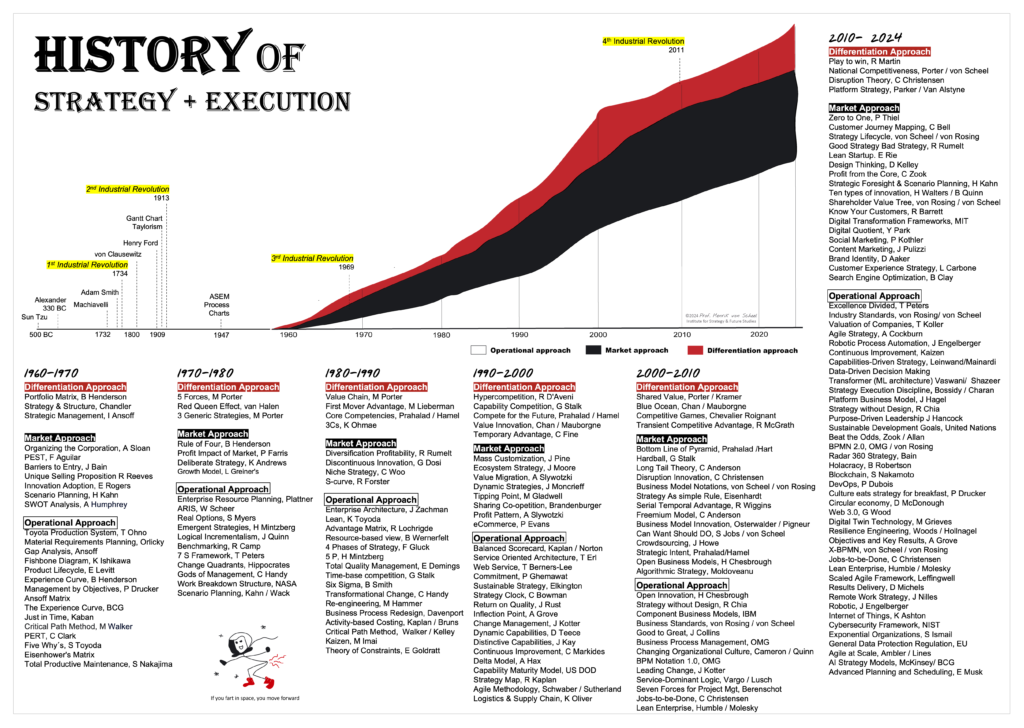
Predicting the Future is a Science. In his strategy positioning research Prof. von Scheel has spearheaded the maturing of predicting the future into a science-driven discipline with a more precise assessment of potential outcomes. For example the foresight of the Digital and Industry 4.0 themes and the 2050 Megatrends compendium to name a few.
In collaboration with Prof. Michael Porter and Prof. Clayton Christensen his patternicity research focuses on hindsight insight foresight and oversight of the innovation and transformation capabilities of organizations in relation to their ability to adopt change capture opportunities explore strategy options and understand potential impacts.
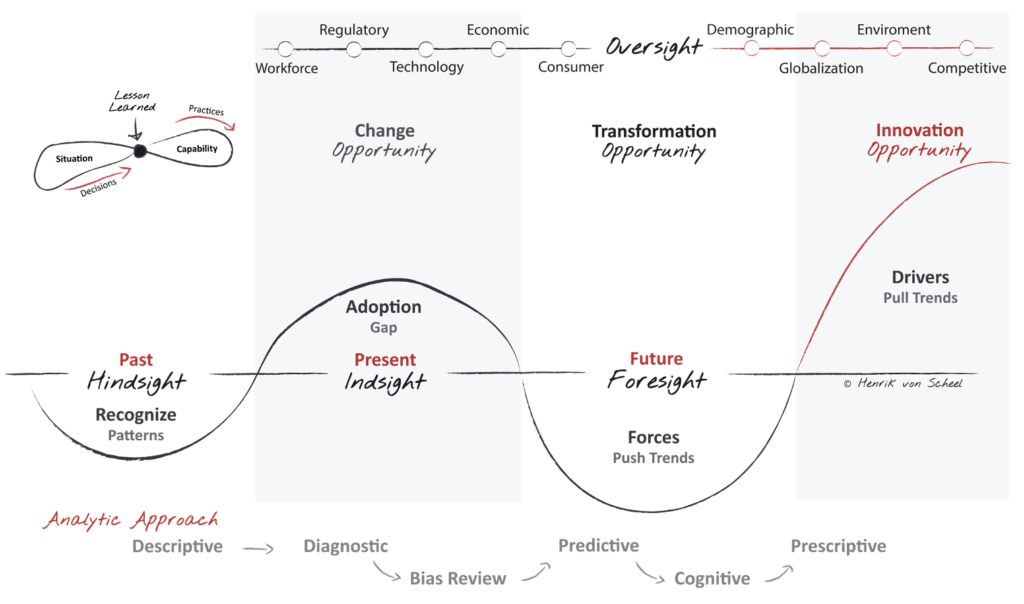
This is a rigorous approach based on different scenarios supported by statistical and probabilistic analysis of both internal and external drivers and forces of the Megatrend archetypes across Technology, Economic, Regulatory, Globalization, Demographics, Workforce, Environmental, and Consumer.
In their study of strategy choices Prof. von Scheel, Prof. Mark von Rosing, Jeanne W. Ross, Neil Kemp, Ulrik Foldager and Arjan Visser pioneered Business Decision Making Notations focusing on patternicity for revenue services value cost operations performance risk and regulatory aspects across Value Chain Business Model Operation Model, Capability Modeling (with Prof. Gary Hamel) and Enterprise Architecture (with Jeanne W. Ross). They are accredited with advancing management operational and organizational disciplines.

The Business Decision Making Notations standards are a unique set of documented rules and instructions that describe a sequence of repeatable procedures practices (best practices, industry practices, and leading practices) across business management information technology architecture modeling and engineering disciplines with step-by-step activities to achieve the desired result. Each standard contains the required descriptions categorization classification semantic relationships ontology meta-objects maps matrices and models to succeed and work across disciplines projects and roles. Together they describe the set of procedures an organization needs to follow to replicate the ability to identify create and realize value in the specified area and subject.
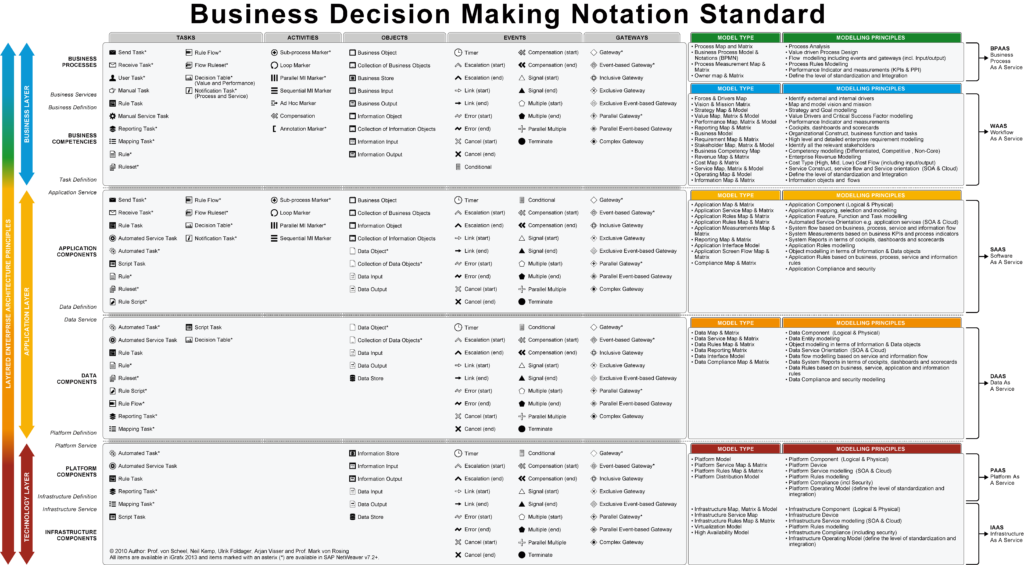 ,
,
Prof von Scheel has studied and identified repeatable patterns of the outperformers and underperformers over the past 20 years. The most recognizable patterns are packaged as best practices (what works well), industry practices (performance patterns), leading practices (value patterns), anti-patterns (what not to do) and anomalies. His most notable work includes: Strategy Meta Models, Strategy Lifecycle, Stakeholder Map with Pain & Goal Chains. Value Chain, Business Model (with Prof. Henning Kagermann), Operation Model and Capability Modelling.
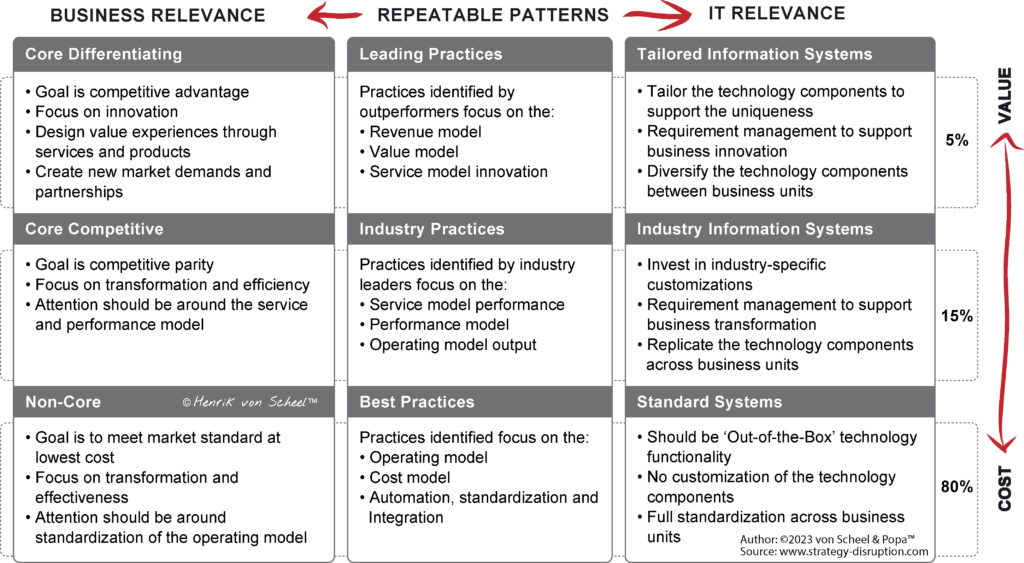
His work most notable contribution includes the Business Model Notation, Operating Model Notation and defining the archetypes, ontology and semantics, lifecycles of strategy, competitiveness and strategy execution.
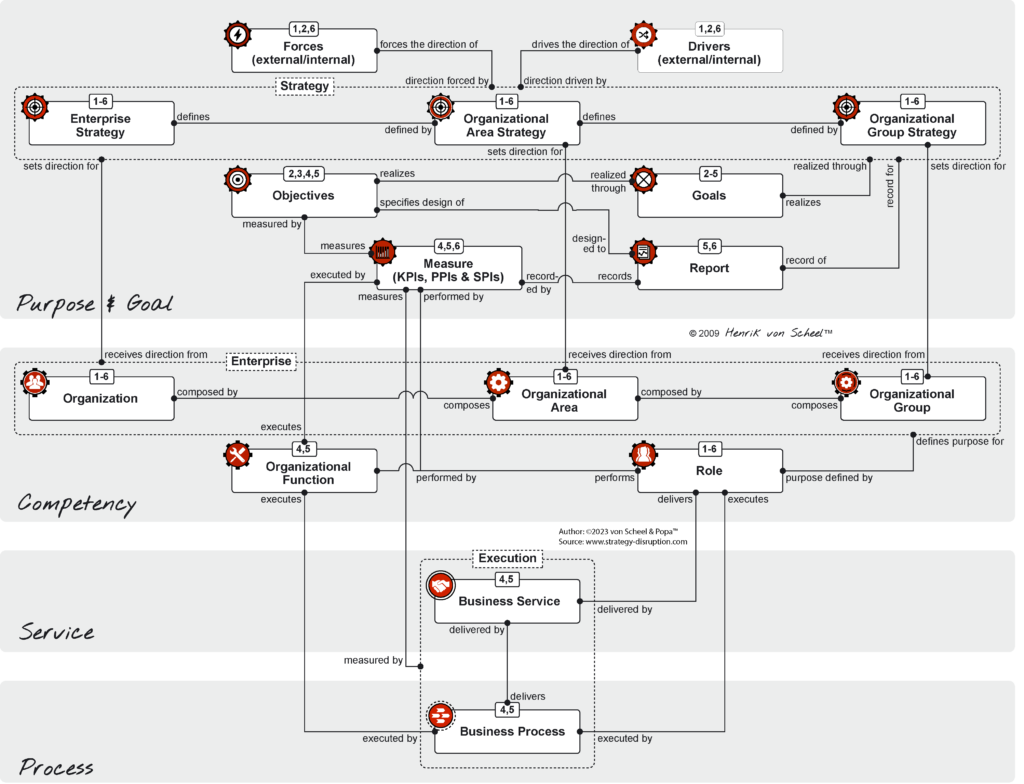
Some companies perform better than others and keep innovating so they grow and thrive over time. This has been true throughout the history of business. Yet until the 2010s, terms like competitive life cycle, competitive advantage, comparative advantage, hyper-competition advantage, and hyper-growth were absent from the corporate lexicon until introduced by Prof. Michael Porter, Prof. Henrik von Scheel, and Richard D’Aveni. Even today, many leaders and managers fail to grasp the fundamental concepts that shape competitive strategy, causing strategic missteps with costly results. His work most notable work includes: Competitive Meta Model, Competitive Modelling, Competitive life cycle, Future Competitiveness of the Welfare State (w Michael Porter).
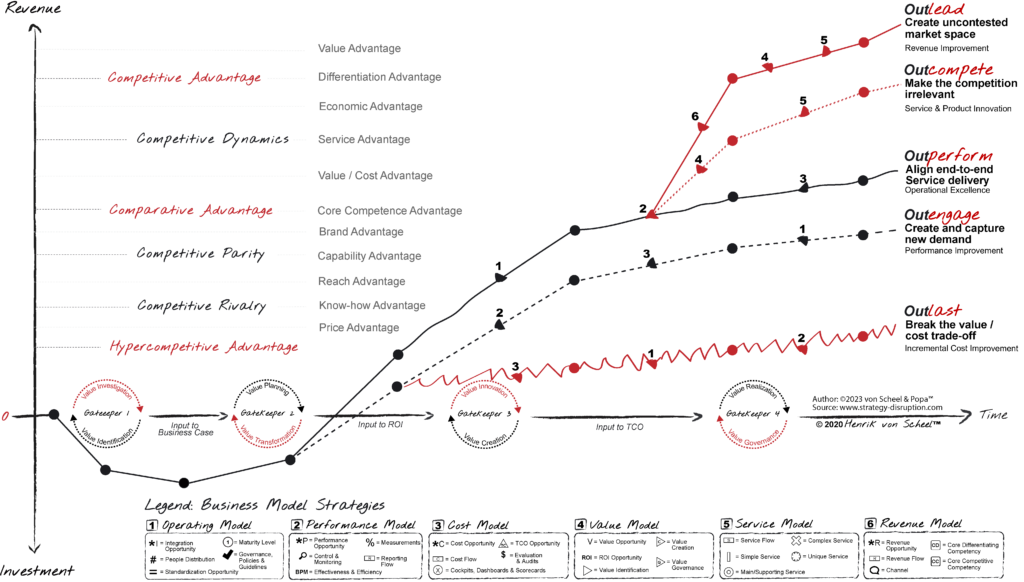
Pioneering in the field of patternicity, Prof Henrik von Scheel, Arjan Visser, Neil Kemp, Jeanne W. Ross and Prof Mark von Rosing are the co-authors Business Standards. The most is the layered architecture, which is a unique set of documented rules and instructions that describe a sequence of repeatable procedures, practices (best practices, industry practices and leading practices) across the business management, information technology, architecture, modeling, and engineering disciplines with step-by-step activities to achieve the desired result.

Each contains the required descriptions, categorization, classification, semantic relationships, ontology, meta objects, maps, matrixes and models to succeed and work across disciplines, projects and roles. All together describing the set of procedures an organization needs to follow in order to replicate the ability to identify, create and realize value in the specified area and subject.
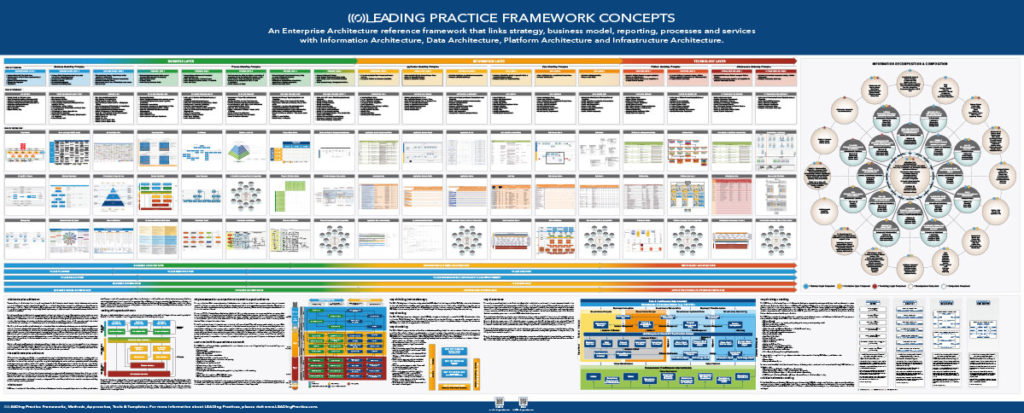
The Business Standards are a result of years of international academic research and industry expert consensus on repeatable patterns that can be reused and replicated. The Business Standards are packaged as ‘Reference Content’ and is both agnostic and vendor neutral. The standard can be founds at www.LEADingPractice.com
Pioneering in the field of patternicity, Prof Henrik von Scheel, Arjan Visser, Neil Kemp, John A Zachman, Prof. August-Wilhelm Scheer and Prof Mark von Rosing are the co-authors Business Architecture and Industry Standards. Most notable are the multiplication factor levers of patterns for impact driven result.
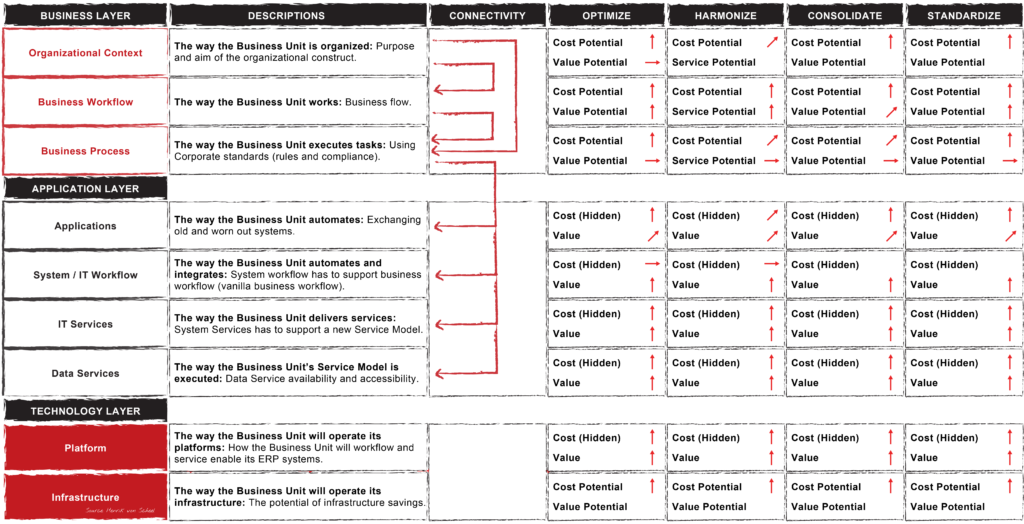
A result of years of international academic research and industry expert consensus on repeatable patterns that can be reused and replicated. The standards are packaged as ‘Reference Content’ and is both agnostic and vendor neutral. They have been specifically designed to be fully tailored to and implemented by any organization both large and small regardless of its various frameworks methods approaches products services and activities. The standards are developed in the following ways:
- Research and analyze what works – again and again (Best Practices) – and discover the unique aspects applied by leading organizations (Leading Practices).
- Identify common and repeatable patterns which provide the basis for the Enterprise Standards.
- Develop ‘Reference Content’ that increase the level of reusability and replication within the disciplines of Enterprise Modelling, Enterprise Engineering and Enterprise Architecture.
- Extend with performance and value accelerators with unique aspects fromthe identified Best Practices and Leading Practices.
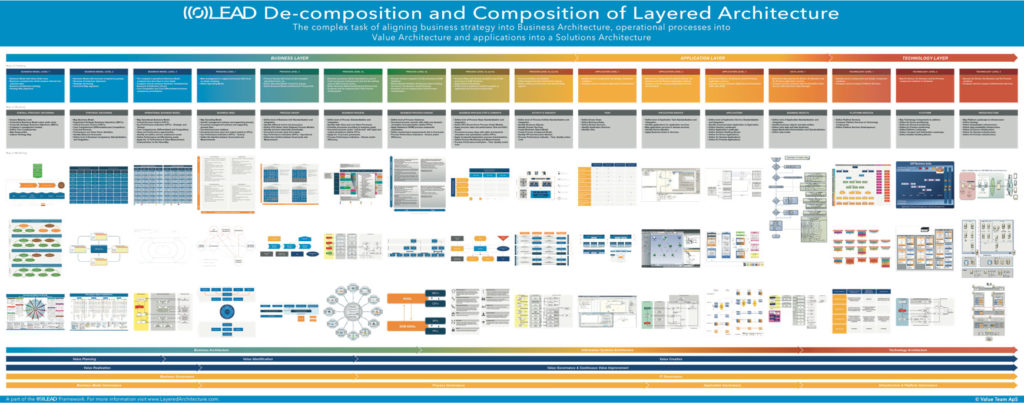
Each of the 153 Standard Reference Content areas are fully integrated with other frameworks, methods and approaches, such as TOGAF, META, FEAF, etc.This ensures full integration and standardization when applying the reference content into your organization, programs and/or projects, thereby having the ability to use our reference content across topics like strategy, capabilities, roles, and process, service and value aspects and technology as well as operational execution between them, creating a cross link throughout the Business, Information, and Technology layers. The standard can be founds at www.LEADingPractice.com
Together with Global University Alliance, Prof August Scheer (father of process automation), Daniel Jones & James P. Womack (fathers of lean thinking), Prof Mark von Rosing he has evolved mainstream process thinking, approaches and standards for BPM and BPMN. He published a 3 volumes called the Complete Handbook of Business Process Management, which is part of BPM curriculum Bachelor at Universities.
His most notable work includes:
- BPM reference content
- extended BPMN
- BPM Layered Object Modelling
- BPM Centre of Excellence
- BPM Alignment
- BPM and Enterprise Architecture
- BPM Change Management
- BPM Lifecycle
- BPM Maturity
- BPM Industry Accelerators etc.

Prof von Scheel co-authored the method to implement SAP AG called ASAP, Accelerated SAP, SAP Agile, and SAP Rapid Deployment Solution. 80% of the Fortune 500 companies apply his work today.
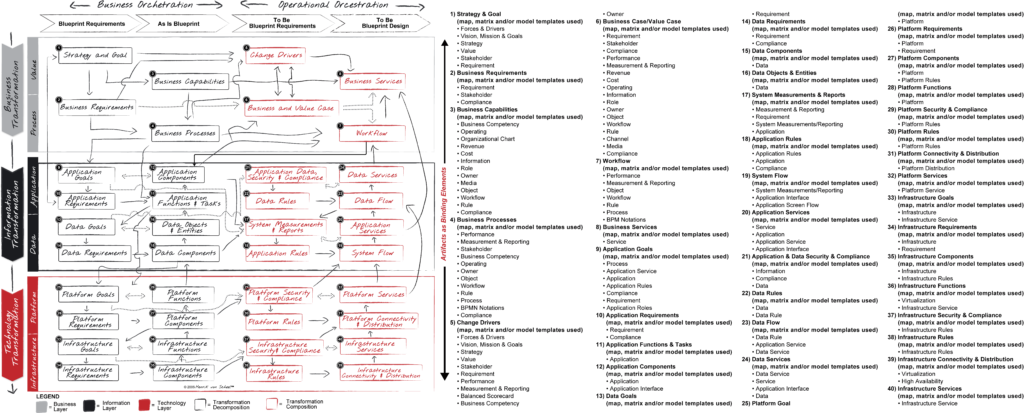
Research Initiatives
The Institute of Strategic Intelligence, often referred to as Strategic Intelligence, is an independent consortium of researchers from leading universities and institutes dedicated to applied strategy research and futures studies.
Since 2010, Strategic Intelligence has set the global agenda and future themes by providing content and reports for the World Economic Forum, Mckinsey, BCG, Blackrock to name a few.
Our mission is to explore and monitor the issues and forces driving transformational change across economies, industries and global issues by providing collective intelligence that shape the global agenda, co-curate with leaders and drive impact with programs like Industry 4.0, Global Pioneer Program and future global trends.
Founded in 2009 based on a unique scientific research approach to contextual intelligence developed during the ignition of the Digital and Fourth Industrial Revolution by Prof. Henrik von Scheel, called “Patternicity.”
The focus is to advise leaders, practitioner and policymakers, and develope practical, research-based frameworks, methods, and approaches across key areas:
Institute of Futures Studies
Our Futures Research (Futurology) is based on a systematic interdisciplinary research of the potential futures based on megatrends Patternicity, Discruption Statistical Analysis, and Impact Probabilistic Analysis studies on economic social environmental workforce regulatory and consumer aspects. Focus areas are
- Industry Trend Compendium (Impact Foresight)
- Hype Cycle (Adoption Insight)
- Emerging Trend Radar (SenseMaker)
- Magic Quadrant (Investor DeepDive)
- Wave Forecast (Executive ThinkWise)
- Industry Disruption Index (Farsight)
- Competitive Pathfinder (Think2Act)
- Regulatory Impact Roadmap (Policy Foresight)
- Future of Work (Capability Health Check)
- Outperformers Study (Hyper-growth Insight)
- Thrive in Uncertainty (Strategic Trend Outlook)
- Operate to Grow (Applied Strategic Foresight)
Institute of Strategy and Competitiveness
Strategy Research (Strategology) identified repeatable patterns of the outperformers and underperformers over the past 20 years. The most recognizable patterns are packaged as best practices (what works well), industry practices (performance patterns), leading practices (value patterns), anti-patterns (what not to do) and anomalies. Focus research areas are:
- Rethink Strategy practices based on study and research of outperformers / underperformers, and the studies of anomalies.
- Reinvent Execution models through study and research of the most recognizable patterns of best practices (what works well), industry practices (performance patterns), leading practices (value patterns), anti-patterns (what not to do) and anomalies.
- Reposition Competitiveness informed by the innovation and transformation studies and patternicity research of capabilities modelling and the drivers and forces of megatrends i.e Technology, Economic, Regulatory, Globalisation, Demographics, Workforce, Environmental, and Consumer.
Research Participation
If your organization, university, or research institution is interested in participating, sponsoring or collaborating in the studies and research, please submit the request form.
